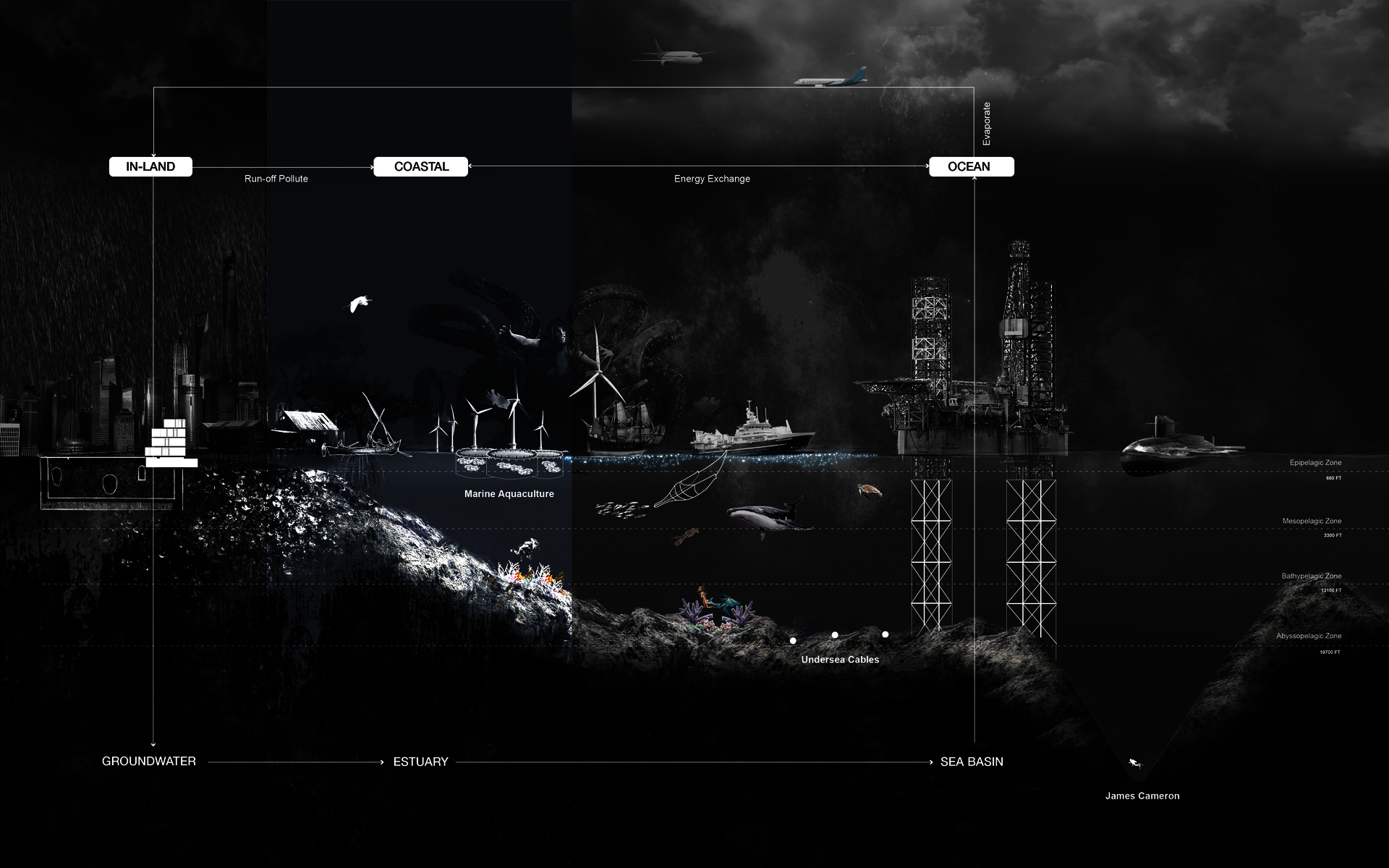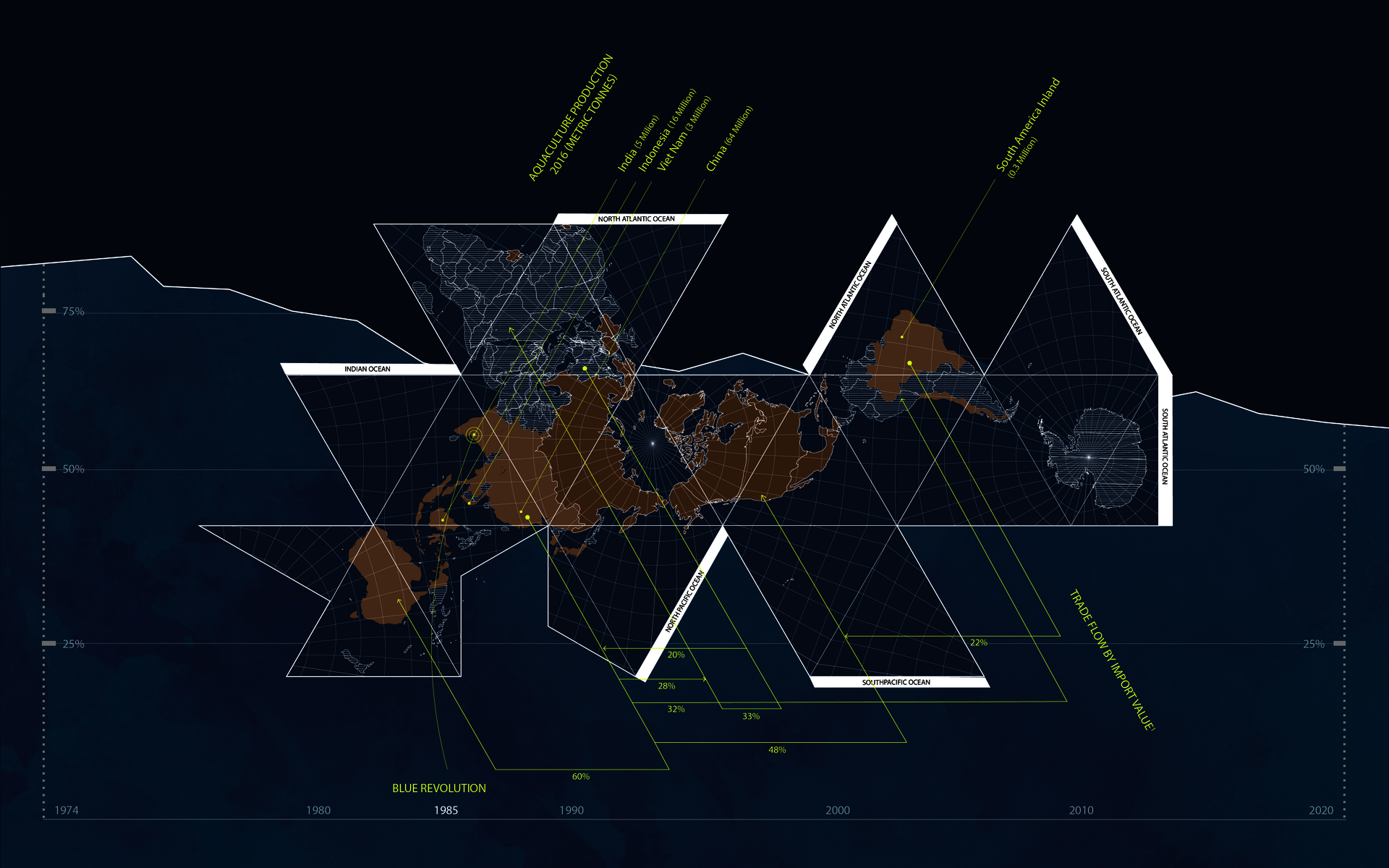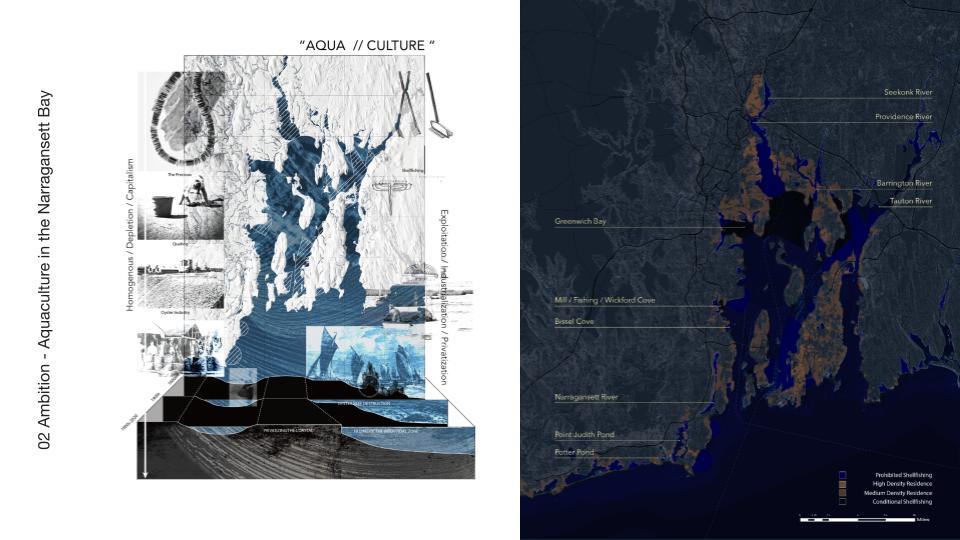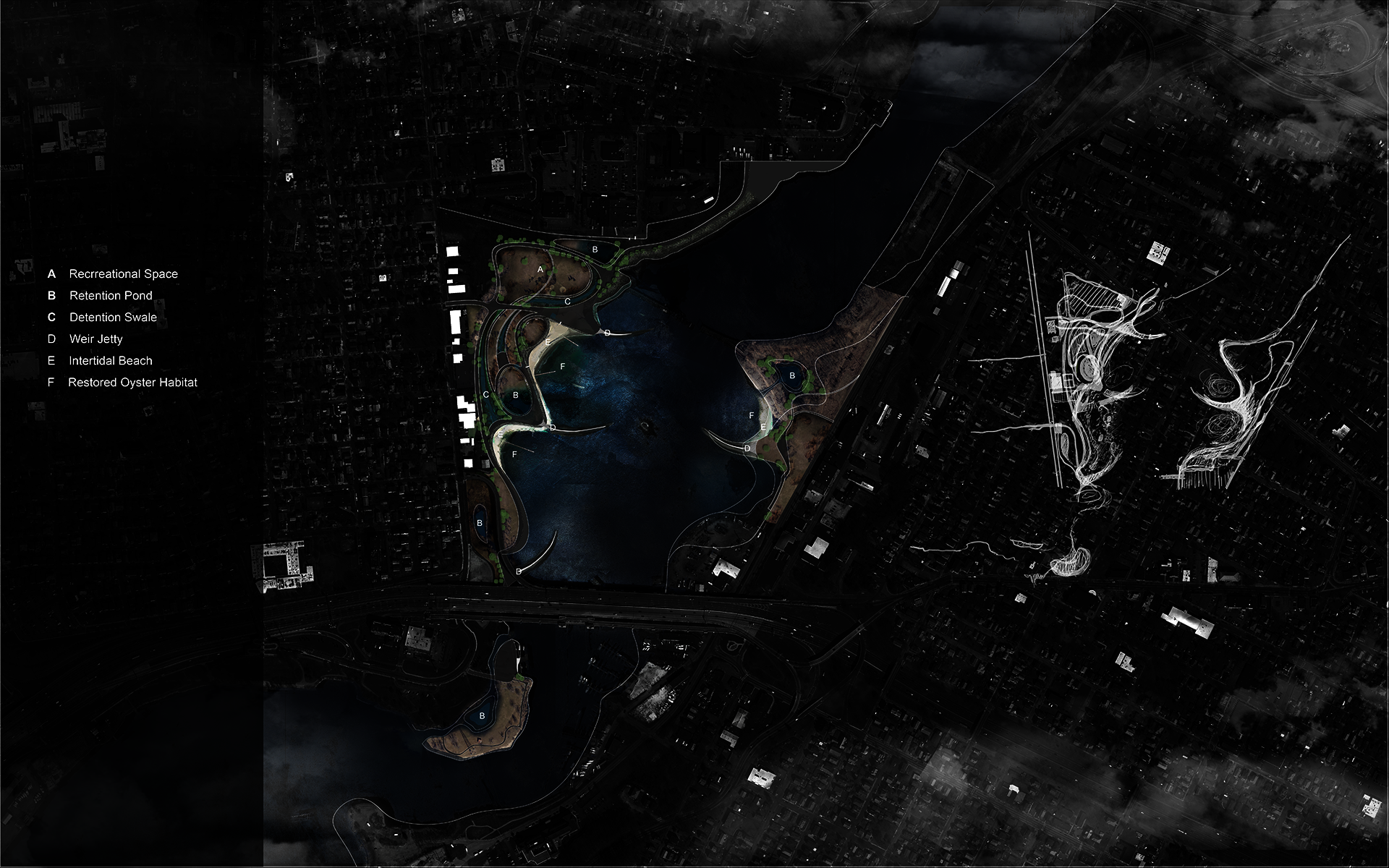Chenjie Zhang
ONE OCEAN / ONE LAND - Reactivate Coastal Commons in Urban Territory
We all live in the same common -– the ocean common, sharing a variety of common pool resources together. With industrialization coming after capitalism, the resource regime is shifting and developing. The Blue Revolution and industrial aquaculture stand out as a strategy to gain resources efficiently to meet the population growth and the resource demands that come after. However, it will reveal another form of cultural exploitation. People in the global south will become a labor resource for the global north, and increase extreme coastal poverty brought by the depletion of mangroves for land and industrial places. In this book, I want to discuss the possibility of reactivating the coastal common in the global north to alleviate this unethical situation in the global south. The role of coastal common, especially in the global north where urbanization has rapidly occurred, will be evaluated using two testing sites in Narragansett Bay. Wild oyster habitats will be restored with this intervention, creating public access to natural resources. By reactivating these coastal commons, we can contribute to the local economy, restore the ecosystem, and access critical ecological resources that will benefit global food production systems
Image

All communities in Ocean common are highly connected. The pollution from urbanization destroys the coastal. The coastal, as an essential interface, has been occupied and privatized quite, which decreases its ability to exchange energy sustainably and successfully. This synthesized drawing illustrates the significance of the coastal, and it becomes the focal point in this book.
VALUE-BASED QUESTION
As the largest reservoir, the most significant habitat, and the primary food source, Ocean is in great danger that needs our attention. There is no doubt that the Ocean is fundamental to the well-being of all the species on the earth. Its currents stabilize the climate; It provides shelters for various species; It offers foods that contribute to 75% of the protein consumed by human beings.
Traditional fisheries can no longer meet our collective human demands at the turn of the twenty-first century. “Thanks to“ the industrialization started half a century ago and the global sweeping of capitalism, the “Blue Revolution“ took place, especially in the global south. The standardized and industrialized food production system, known as the global agri-food system, soon became a significant food resource. However, it works at the cost of destruction of the coastal ecosystem, the delimitation of consumers and producers, the exploitation of labor in developing countries, and many other ethical issues. In most cases, the coastal commons, which play an essential role in the Ocean common, are under extreme exploitation and severe destruction. Many of them now exist in the form of a city or an urban territory.
Ironically, we cannot bring back the traditional way of food-producing like artisan fishing and harvesting entirely in the coastal common because of the growing population. However, what a coastal city can contribute to global food production and the possibility of reactivating the coastal commons is worth thinking about and exploring.
Image

Based on the report from the annual yearbook from FAO , the map indicates the exchange of a common pool resource - seafood. Countries with annual consumption more enormous than 30 kg/year per capita are mainly located in the global north. Countries that play an essential role in aquaculture and exporting are mainly located in the global south.
AMBITIONS
To deal with the issues of coastal commons globally, we need to bring back self-sufficiency, especially in the global north. In this process of reactivating coastal commons, landscape architects will use our knowledge to reveal the invisible relations between the social and ecological system; to increase landscape literacy of the public; to create a landscape that able to produce food again; to encourage people engage within this process, and finally, to reduce the pressure and exploitation we put on the global south. I am using the Narragansett Bay as a testing ground for my thesis.
Image

Quahogging, Shellfishing, and Aquaculture are several important terms in Rhode Island, the waterist state in United States. Ecological and geographically, the coastal condition is constantly changing and thus people’s culture are changed accordingly. My thesis tries to explore the intangible systems.
DESIGN
The gano st park site is interesting not only because it is once a very oyster populated area but also it triggers the discussion about to fulfill my ambition of activating coastal commons, how a public urban recreational space should alter accordingly. In my plan, there is an interwinding of human intervention to bring back the oyster and how oyster can benefit human activities in the same. Creating lands, slow down water which enables people get closer to the water, attracting more fishery and what’s more important, how these space and design can actually improve the water quality and attribute the oyster seeds.
Image

Master Plan of Gano Street Park: Use jetties to slow down water flows and create ideal habitats for oysters. In the meantime, create detention and retention ponds to filter the water and provide food for oysters.
- Architecture
- Ceramics
- Design Engineering
- Digital + Media
- Furniture Design
- Global Arts and Cultures
- Glass
- Graphic Design
- Industrial Design
- Interior Architecture
- Jewelry + Metalsmithing
- Landscape Architecture
- Nature-Culture-Sustainability Studies
- Painting
- Photography
- Printmaking
- Sculpture
- TLAD
- Textiles
